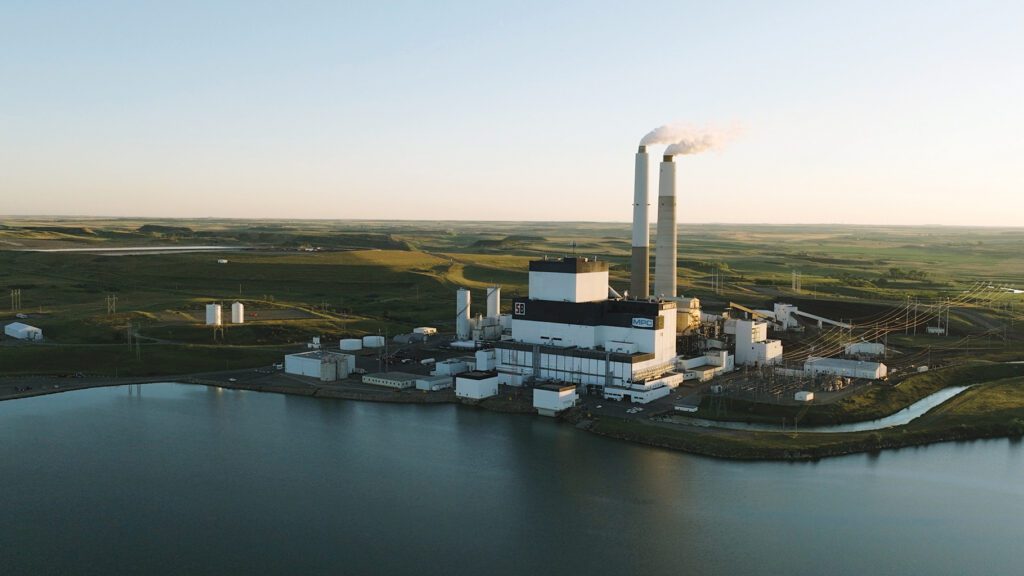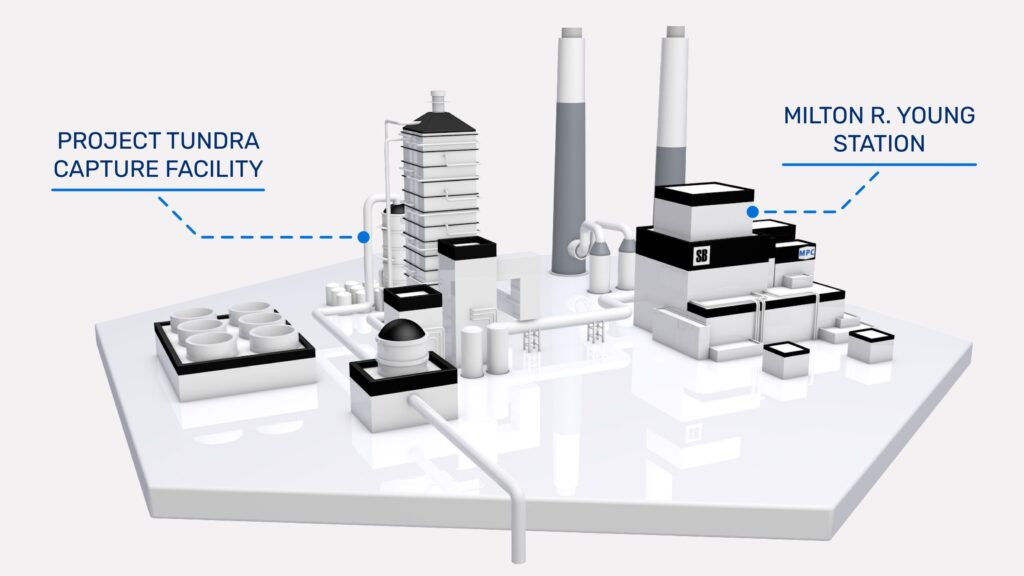Lignite Coal Power CCS Project in North Dakota Gets First Tranche of $350M Federal Funding
Project Tundra, a demonstration project that seeks to capture an average of 4 million tons of carbon dioxide from flue gas from two lignite-fired units at the 705-MW Milton R. Young Station near Center, North Dakota, has secured a $4.1 million federal award from the Department of Energy’s Office of Clean Energy Demonstrations (OCED).
Under the Dakota Carbon Center East Project (DCC East), project sponsor Minnkota Power Cooperative plans to install and operate a carbon capture and storage (CCS) demonstration facility to treat all flue gas from Unit 2 and a portion of the flue gas from Unit 1 at Milton R. Young Station. Project Tundra will deploy carbon capture technology using Mitsubishi Heavy Industries’ KS-21 solvent.

According to the Project Tundra website, Milton’s CCS process involves diverting flue gas from the Milton R. Young Station into a scrubber, where the gas is cooled and impurities are removed. The gas is then sent to a large absorber unit, where it rises through an amine-based liquid solvent that bonds with the CO₂, separating it from the flue gas. Once the CO₂ is captured, the solvent is transferred to a regeneration unit, where heat breaks the CO₂ bonds, releasing pure CO₂. Finally, the CO₂ is compressed and prepared for deep geologic storage. “After the CO₂ is compressed, it is transported through a short pipe to an injection site near the Young Station. There, it is sent more than a mile underground to be stored safely and permanently in North Dakota’s ideal geologic formations. Learn more about this step on the CO₂,” the site notes.

Project Tundra, notably, will be the first “to use CCS technology at a coal plant in the United States with on-site geologic storage of the captured CO₂ via Class VI wells,” OCED noted. “Captured CO₂ would be safely and permanently stored in saline geologic formations deep underground beneath the power plant.” Class VI wells, which are used to inject CO₂ into deep rock formations, are permitted by the Environmental Protection Agency (EPA). The EPA has so far issued only four final permit decisions, though it notes it is currently reviewing 53 projects.
Project Tundra, which is being developed as part of an industry consortium that includes TC Energy, Mitsubishi Heavy Industries, Kiewit, and the Energy and Environmental Research Center at the University of North Dakota, has marked several milestones. “The project collaborators are currently in the final stage of project development,” it notes.
Since initial concept discussions in 2015, it has progressed through early feasibility and research stages in 2016, the start of CarbonSAFE CO₂ storage feasibility work in 2017, and the enhancement of the 45Q tax credit in 2018. From 2019 to 2021, engineering, research, and design for carbon capture and storage continued. In 2022, Minnkota received a permit for the largest CO₂ storage facility in the U.S., along with a $100 million loan from the state of North Dakota.
Construction-ready engineering and design began in 2023, and the final project’s design has been initiated. Project developers suggests a final decision on whether the project will move forward may come in 2025. That will potentially kick off construction starting in 2025, with commercial operation targeted for 2029.
“The vast majority of capital and operating costs will be funded through the federal 45Q tax credit, which works similarly to the kinds of tax credits that wind and solar projects have utilized for decades,” Project Tundra notes. “The tax credit provides $85 per ton of CO₂ that is permanently stored underground over a 12-year period. The project has secured $250 million in low-interest financing through the state of North Dakota’s Clean Sustainable Energy Authority (CSEA) and is in pursuit of other funding opportunities.”
The DOE’s $4.2 million first phase of funding is part of a larger $350 million cost-share award for which OCED has allocated up to $350 million. Phase 1, which will last six to nine months, entails the completion of a front-end engineering and design (FEED) study for carbon sequestration, providing input into the National Environmental Policy Act review process, and receiving a permit to construct a Class VI well. “During Phase 1 of the OCED-funded project, DCC East plans to develop a site evaluation summary and preliminary business plan, start community benefits planning, and continue project permitting.”
Project Tundra is the final project of three picked by the DOE in December 2023 under its Carbon Capture Demonstration Projects. Others include Calpine’s Baytown Carbon Capture and Storage Project in Texas and the Sutter Decarbonization Project in California.
—Sonal Patel is a POWER senior editor (@sonalcpatel, @POWERmagazine).